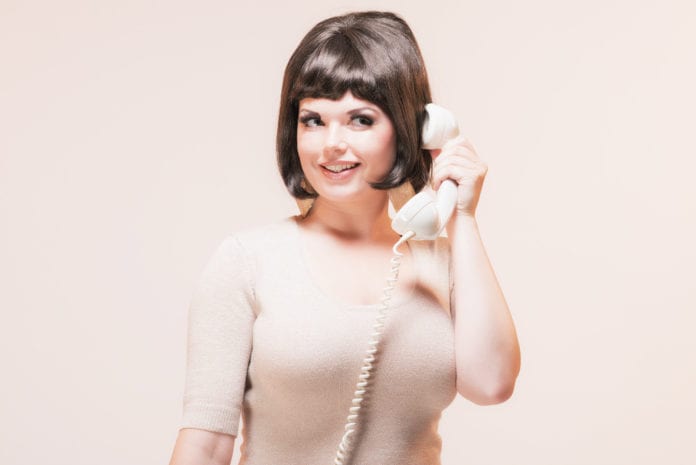When it comes to the 1960s, this decade is most often remembered as a groovy time of peace and love, go-go boots galore, and a lot of hairsprays. But believe it or not, there was a lot more to 60s fashion than just that. In fact, the larger-scale global changes related to the Civil Rights movement and the feminist movement had people truly pushing fashion norms to the extremes. Bold new designs, bright psychedelic colors, short skirts, and long, shaggy hair was the new thing, and it was something nobody of the decade prior could have ever predicted.
But to give you a deeper look into what really made this period so influential with the world today, in this article, we’re going to delve into everything you need to know about the fashion of the 1960s. From its history to its styles and its most famous icons, let’s dive in and get started with a guide to 60’s fashion for both men and women.
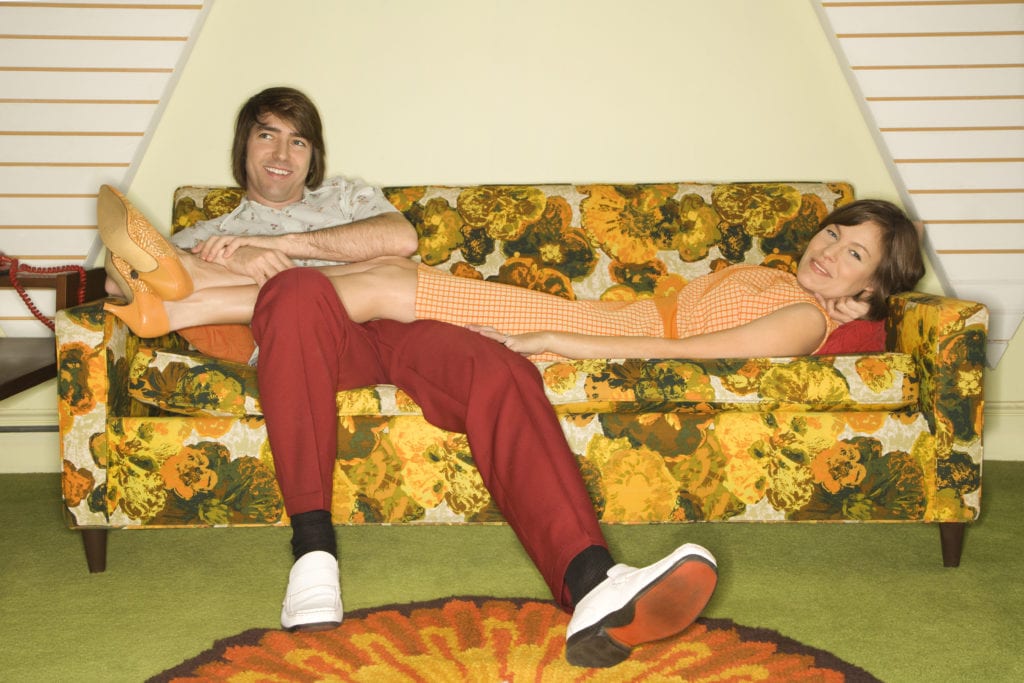
History of 60’s Fashion
The ’60s were a major transitional period for all people in one way or another. Not just because of the many civil changes taking place, including the second wave of feminism and the Civil Rights movement making advancements, but also because of the global changes taking place. The assassinations of leaders like John F. Kennedy and Martin Luther King had a strong effect on people of different social classes and swayed them for change and rebellion. Major fashion changes happened as a result, as half the people used it as a way to not express their beliefs about politics, while the others used it as a way to oppose social conformity.
Therefore, the 60s were split down the middle. Half of the people were comfortable with the ways of the past, and the other half were ready for change. Therefore, this was a decade that carried over sophisticated designs inspired from the ’50s, as well as welcomed in strange and bold designs of the new generation. This included the Space Age trend, the hippie and bohemian style, and minimalist fashion. This brought new colors, contrasting patterns, and more casual-fitting clothes than ever before. All around, this was a major turning point in fashion that would continue to influence many fashion designers and trends of today.
60s Fashion Icons
Now, when it came to the icons of the decade. While there were a large number of fashion icons who majorly influenced the fashion world in the decade, men certainly had their fashion influencers, too. With that said, here are some of the major fashion icons of the 60s for both men and women.
Female fashion icons
1. Jackie Kennedy
Jackie Kennedy’s 1960s style was simple, modest, and elegant. It was one of the easiest and most affordable fashion trends to imitate, and that made it quite popular.
2. Brigitte Bardot
Brigitte Bardot was the opposite of Jackie Kennedy’s style and brought a bolder, brighter, and more unpredictable style that some would even consider to be silly. However, women of the decade loved the change, and it soon became a social norm.
3. Mary Quant
Mary Quant introduced a very bold, cheap, and strange style in comparison to the other trends of the 60s. This included the miniskirt, hot pants, colored tights, and plastic macs. In fashion terms, she was Jackie Kennedy’s opposite in just about every way possible, and women loved it.
4. Twiggy
Lastly, Twiggy was a London-based supermodel that was known for her exaggerated, long lashes, bold makeup style, thin frame, and cropped hairstyle. Soon after becoming an icon, women alike were lining up to look and dress just like her.
Male fashion icons
1. Jimi Hendrix
Jimi Hendrix was popular for many reasons, but one of the biggest aside from his music was his unique and bold style. Fully immersed in British fashion, he brought back vintage and Victorian aesthetics in various forms. Additionally, he could be seen sporting many one-of-a-kind psychedelic pieces, as well as Native American fashion such as fringe and beads, which became very popular amongst the hippies of the decade.
2. Steve McQueen
Steve McQueen was one of the most influential people for men of the 60s. He was known as “The King of Cool” and sported a number of laid-back, bad boy trends in a time of suits and elegance. One of his most popular accessories was the bomber jacket.
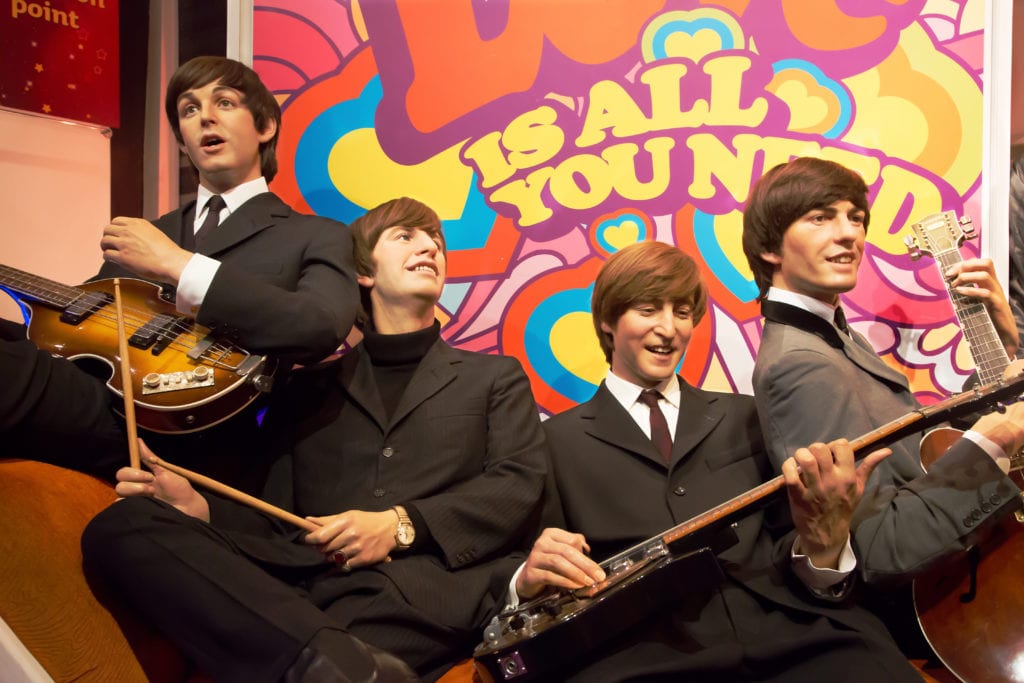
3. The Beatles
Lastly, The Beatles had a huge influence on music during their time, but they also heavily influenced 60s fashion. The Beatles wore their hair long instead of the neat and sleek look of most people of the period. It was their unique, retro look, aside from their music, that inspired many generations to come.
Popular Styles for Women of the 1960s
Now, when it came to the popular styles of the decade, the 60s were incredibly diverse for women. From flared-bottomed pants to colorful miniskirts, women of the 60s were showing more skin than any other time period, and they weren’t afraid to flaunt outrageous or silly styles. The patterns grew brighter, and so did their confidence. However, there are a few key styles for the decade that were more popular than others. Here’s a quick guide to them.
Skirts and colored tights
To start, the 60s was a popular time for skirts for women of all ages. Popular styles of the time included pencil skirts, swing skirts, maxi skirts, and box-pleated A-line skirts. Mary Quant was the one to introduce the miniskirt in 1964, which ultimately changed women’s fashion history forever.
Aside from skirts, Quant also helped to bring about the popularity of colored tights, which were often paired with miniskirts. In the 60s, showing too much bare leg was still considered to be inappropriate. Therefore, colorful tights came along to fix this problem and could be found in colors ranging from red, green, orange, yellow, and blue.
Beatnik Fashion
Next, Beatnik fashion was another popular subculture trend that arose in the 60s and was popularized by both men and women. This was a style that was kept alive by art-lovers and creative minds, such as writers, musicians, and artists, including Andy Warhol. This trend typically consisted of berets, turtlenecks, and striped tops.
Bohemian/Hippie
Next, the ’60s hippie style was one of the biggest fashion moments of previous decades. Popular amongst both men and women, the hippies wore what they called ‘anti-fashion’ as an act of protest against their society. Through this, they rejected consumerism for a more natural and transcendent way of life, opposing tight-fitting clothes and fashion trends of their time.
With that said, hippie trends typically consisted of loose-fitting clothes, psychedelic colors, fringe, peasant blouses, long hairstyles, boots, sandals, and rounded sunglasses. Many of their clothes were also hand-made with hemp or loose cotton and customized with tie-dye colors. Many hippies also wore bandanas, scarves, and hemp and leather bead accessories.
Casual wear
For traditional casual wear of the time, women could often be found sporting swing dresses, skimmer dresses, or tops and blouses. While these trends were very similar to the 50s, the difference was mainly seen in the colors, as they were much bolder and brighter than the prior decade. Dresses also fit differently, and the tight-fitting look started to become looser. Blouses could also be left untucked in the 60s, which was entirely different than the fashion rules of the 50s.
In addition to blouses and dresses, women would also wear pants for casual and business occasions. At the start of the 60s, all pants came down to just above the ankle until the late 60s, when long pants became the new trend. Jax pants from the 50s were a popular choice at this time and featured a very high waist-shaped hip and slender leg.
Work fashion
When it came to women’s work fashion, of course, a women’s outfit depended on her occupation. In certain settings, women could wear women’s suits or skirts and tops with matching short jackets. Older women frequently wore tailored suits with pencil skirts and cropped jackets, while younger women preferred the knit suit. Some work offices, however, did not allow women to wear pantsuits, as it was a relatively new trend that wasn’t entirely socially acceptable yet.
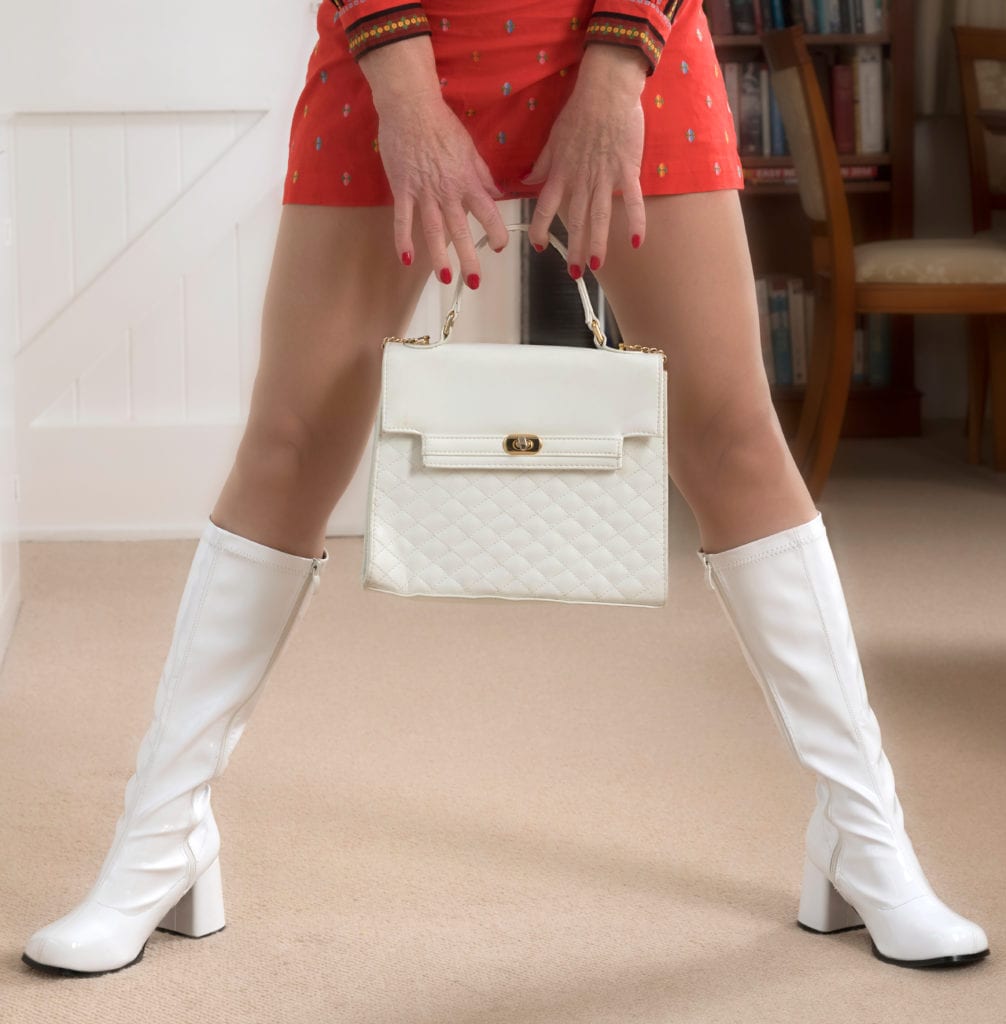
Women’s Shoes
Next, let’s talk about shoes. In the ’60s, there was a variety of different shoes for every occasion. From work to home, shoes were vastly unique and different for every occasion. Here were some of the most common shoes you would find women wearing in the 1960s.
1. Go-go boots
Starting off, one of the most popular shoes of the decade was the iconic go-go boots. Popularized by actress Jane Fonda, these shoes were introduced in the middle of the decade with a low heel and a high rise that would extend up to right under the knees. However, as time passed, the go-go boots would also produce knee-high versions, kitten-heeled versions, and additional colors.
2. Pointed flat shoes
Next, pointed flat shoes were another popular trend of the 60s. They combined the winklepicker of the 50s with a sharp pointed toe and a flat ballet shoe to create the pointed flat of the early ’60s. The pointed flat toe shoe tip extended far past the natural toe line in early designs to help eliminate the problem of squeezing a woman’s foot. By the mid-’60s, the toe was reduced to a rounder almond-shaped toe. It was the perfect accessory to go with mini skirts, making them appear much more modest and casual than when paired with high-heels.
3. Mary Jane shoes
And lastly, Mary Jane shoes were another popular flat shoe of the decade for women of all ages. They featured a rounded toe, a single strap across the top, and a short heel. These shoes were comfortable and cute and came in solid colors as well as two-tone combinations. Mary Jane shoes were also most commonly worn to complete a ‘baby doll’ look. Read more about other Mary Jane shoes and other fashion trends here on thetrendspotter.com.
Accessories
Jewelry
Now, during the 1960s, jewelry trends changed dramatically from the decades prior. At the beginning of the decade, the 50s trends of gold and pearls were still heavily prominent in women’s fashion, but bold and colorful accessories were also making an entrance. Key pieces of this decade included large, geometric earrings, large stacked bangles, and big rings. The younger generation was also popularizing plastic jewelry inspired by pop art and typically wore jewelry in the colors of yellow, red, green, pink, black, and white.
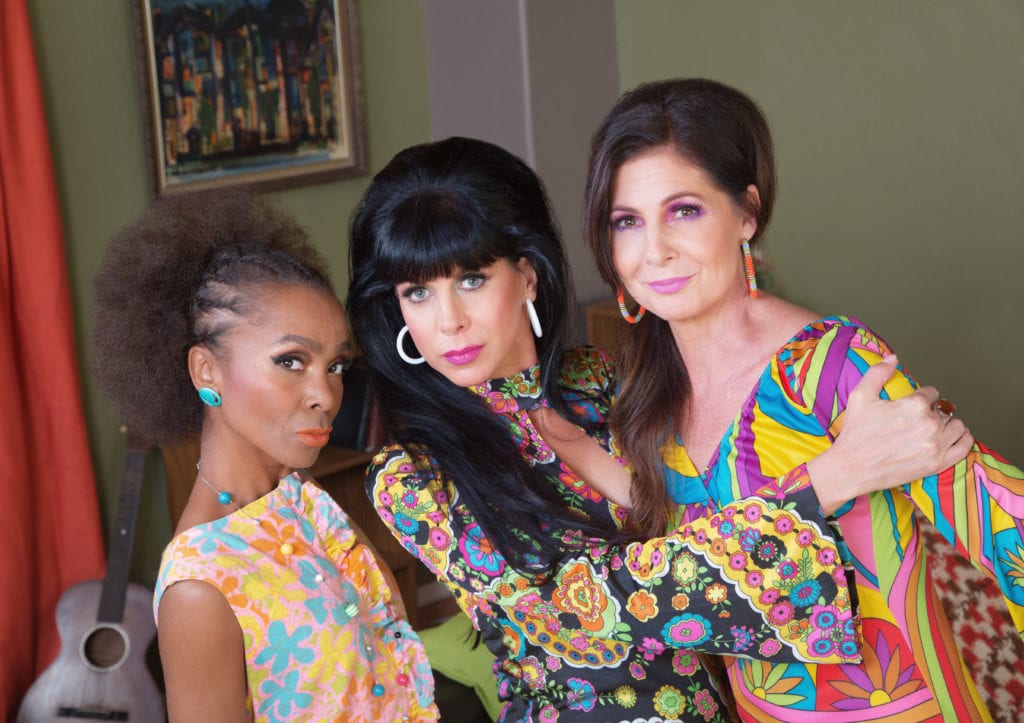
Hair and makeup
When it came to hairstyles, the most famous and trending hairstyles of this period were:
- Large beehive hairdos were popularized in the early part of the decade, thanks to Bridgett Bardot
- Short, cropped, and contoured styles were popularized by Twiggy
- Long, natural styles were popularized by the hippies in the late 1960s
Aside from these styles, during the mid to late 60s, women’s hairstyles begun evolving and became focused on the ‘bigger is better’ mentality. Therefore, large hair, like in the movie “Hairspray,” became the new norm. This is because this gave a more rounded and petite “doll-like” appearance to the face, which was thought to be a flattering look for women.
For makeup, the trends varied widely, but the common core of all makeup trends of the decade was creating a look that made the eyes look bigger. Winged eyeliner was popular for this, but that wasn’t the only way ladies of the ’60s made their eyes stand out. False spider lashes from Twiggy, eyeshadow in much cooler tones, and bold crease makeup were all also popular trends. Even the mod black and white makeup was big, featuring a pale shadow and black lining around the eye to emphasize the overall shape.
Popular Styles for Men of the 1960s
Bikers style
For popular styles for men, the biker look was a big fashion trend of the 1960s that is still influencing modern times today. This look influenced by the rock and roll greaser culture of the ’50s and had a more edgy, laid-back style that could speak for itself. The overall look of the biker group was kept simple, and typically featured only a T-shirt, a leather jacket, black jeans, and heavy-set boots.
Mod fashion
Next, the 1960s ‘mod’, or modernist, fashion was a popular trend characterized by slim fits for both men and women. This fashion period was full of bold, loud, and creative designs and colors that were meant to express the wearer more accurately. This style typically featured pieces such as tapered trousers, box-like jackets, parka coats, polka dots, colored tights, and more. This trend was also embraced by The Who, Brian Jones, and Steve McQueen and was considered to be one of the most popular trends of the decade.
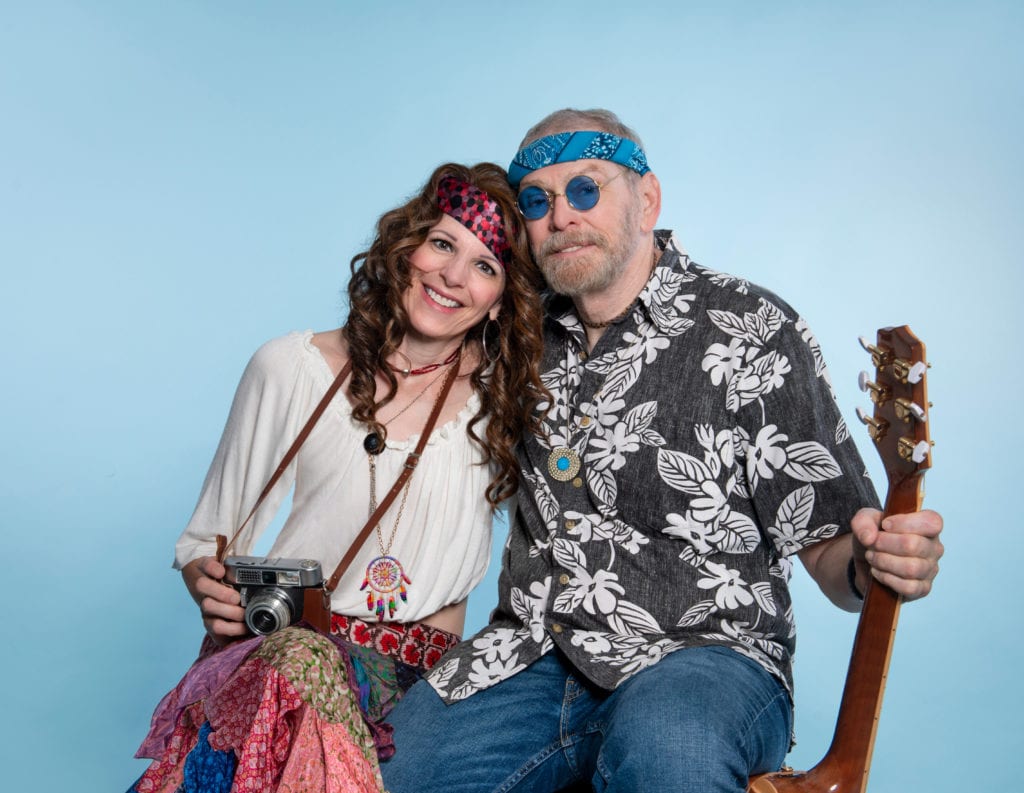
Casual wear
For casual wear, a man’s outfit typically consisted of slim-fit trousers paired with a button-down shirt, polo shirt, or a patterned sport coat. Outside of the office, men could wear the latest trend for sportcoats in bold patterns and contrasting colors. This was influenced by the younger generation known as the Ivy League that wore mismatched suit jackets and pants with bold sweater vests.
Aside from the polo, western shirts, camp shirts, and button-down shirts in plaid or stripes remained the essential men’s shirt for almost every occasion and could be worn untucked for casual occasions.
Work fashion
For work fashion, men continued to wear business suits that featured dull colors, such as greys and browns. However, suits were modernized slightly with a lower waistband and flat-front trousers. Some suits were even changed in their texture and were given more noticeable patterns such as checks or plaid instead of solid colors.
Sports coat
Next, sport coats continued to be a popular trend for men outside the office. The major difference with sports coats in the 60s as opposed to the 50s is that colors and patterns became bolder. Muted colors of the past suddenly became brighter colors of the future. Colors such as blue, red, ivory, and mustard yellow were popular and were typically paired with trousers in a solid color.
Men’s Shoes
For the men’s 1960s shoe fashion, men had an array of shoes they would wear to work or to outings, just as women did. However, in terms of classic and common 60s shoes, these were what you were most likely to see a man sporting.
1. Oxford shoes
As the 60s hit, most men continued to wear Oxfords as their regular shoes for outings and for work, just as they did in the 50s. These shoes typically featured a smooth body with a brown color and soles that matched the body color. This lace-up dress shoe had become the staple of every man’s wardrobe and would remain that way for many years to come.
2. Slip-on shoes
When it came to men’s casual shoes, slip-on loafers were a hit in the ’60s. Men loved to get home after a long day and slip on a pair of shoes without having to worry about tying the laces. These casual shoes featured a pointed toe at the beginning of the decade but later became more rounded as time progressed. For the younger generation, such as the Ivy League, moccasin and penny loafers were preferred for casual shoes.
3. Chukka boots
Lastly, another popular style of the decade was the suede chukka boots. Most common on college campuses, the chukka boot was made popular by Steve McQueen and featured soft, grey, and tan suede that offered a more casual, laidback appearance. And with the changes taking place with pant hems rising already, boots continued to become more common amongst men. And by the mid-60s, the chukka boot and many other boots styles became a popular piece for men of all ages.
For more popular shoe styles and other fashion of men in the 60s, be sure to check out fiftiesweb.com for more information.
Accessories
Hats
For accessories, hats were always a must for older men whenever they would leave the house. However, the next generation of young men preferred to go hatless and flaunt sleek combed hair instead, which many believe to have been influenced by President Jack Kenedy. However, when men did wear hats, they would typically choose a snap-brim fedora. These hats featured hatbands that were more detailed in design than most and were the perfect compliment to wear with the slim suits of the decade.
Neckerchief
Next, one of the common accessories that younger men would wear instead of a tie was the neckerchief. First coming into the public eye in the late 60s, the neckerchief was a loose-fitting piece that folded around the neck for a more casual look. The look was charming and stylish with brighter colors and paired well with sports coats. However, traditional and conservative men continued to wear ties, as neckerchiefs were more associated with the younger generations, such as the Ivy League.
Hairstyles
For hair, the 60s were split down the middle when it came to styles for men. Conservative men continued wearing the traditional clean, side-part with a short back that was common in the 50s, while younger generations began to branch off to longer, shaggier looks. This was majorly thanks to the influence of mod bands such as The Beatles and typically included beatnik styles, mop head cuts, and bowl cuts. Aside from these two opposing trends, the pompadour, quiff, and ducktail style was a style common amongst many young men and teenagers in the biker/greaser fashion, as well as the flat top or boxcar cut.
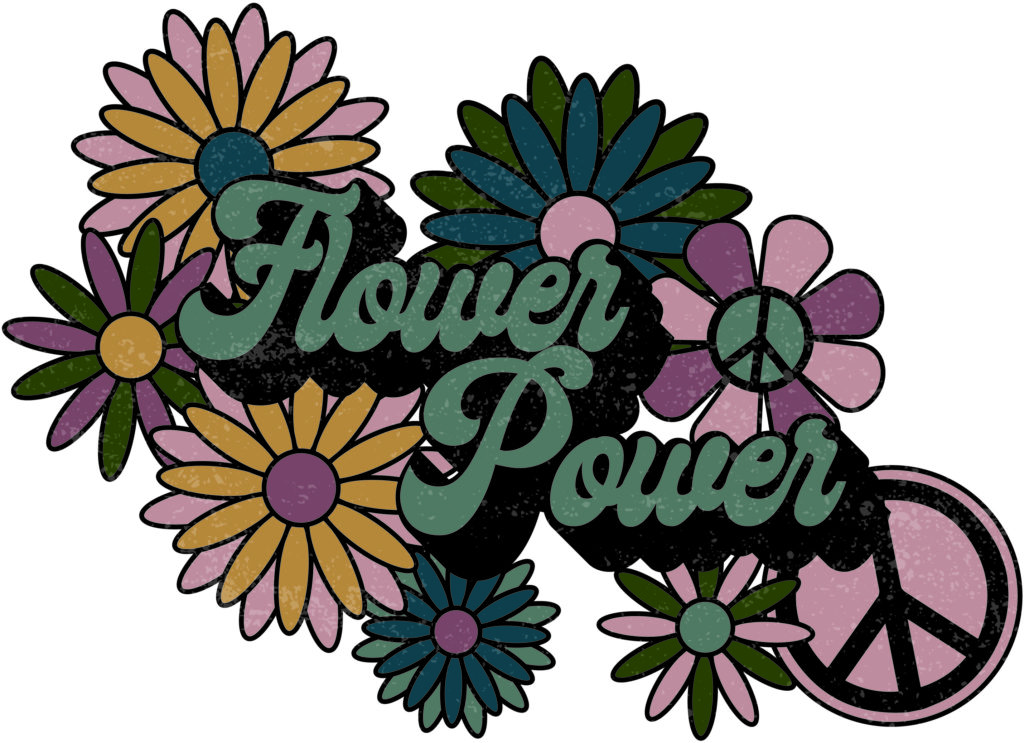
Conclusion
Overall, the 60s were a time of growth and transition. For fighting for Civil rights to the everchanging fashion pushing to become the new norm, this was a time truly unlike any other. However, this was also the decade where people pushed back the barriers of social normality and embraced their own style for so than ever. From hippies to beatniks, no two styles were ever the same. For that reason, the 1960s will forever be remembered as a unique period of variety, freedom, and self-expression that still continues to influence many fashion trends of our modern world today.
Sources:
https://fiftiesweb.com/fashion/1960s-mens-fashion/
http://www.mensfashionmagazine.com/a-decade-in-fashion-the-1960s
https://medium.com/@kalyanii8927/fashion-history-the-look-of-the-1960s-292958b78951


